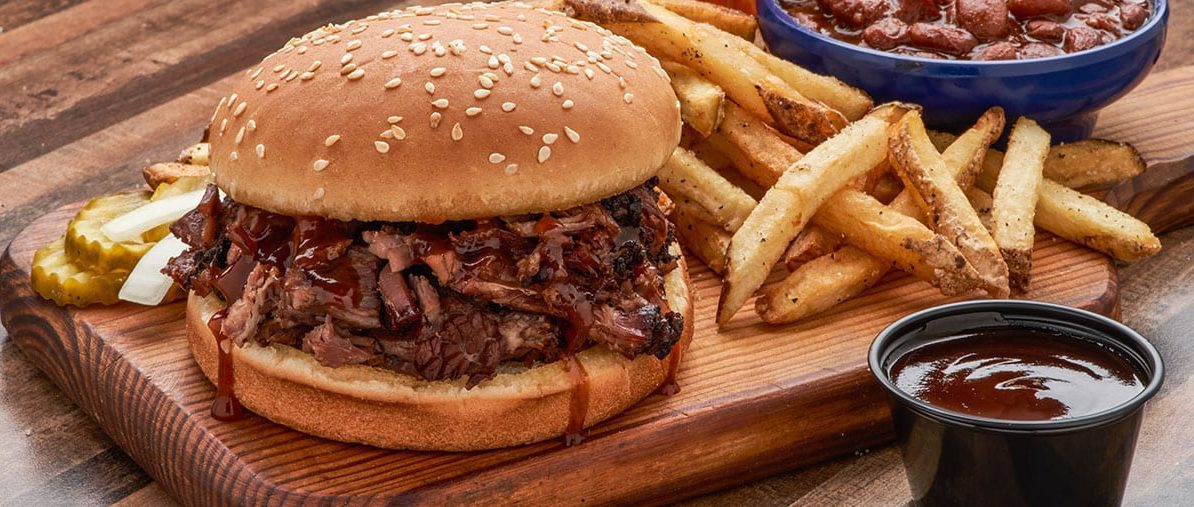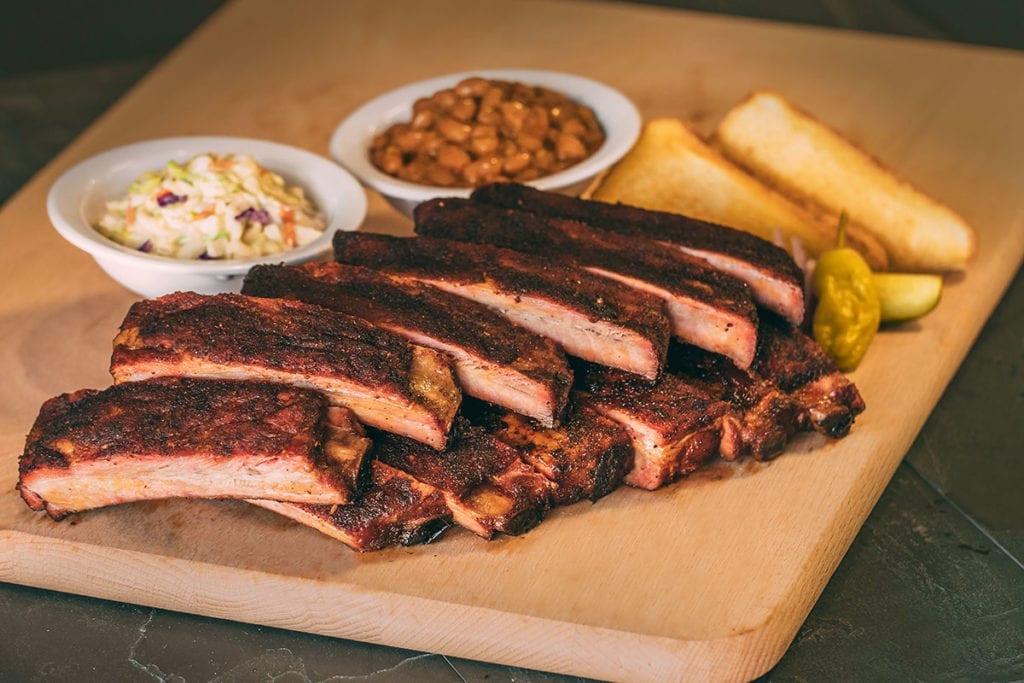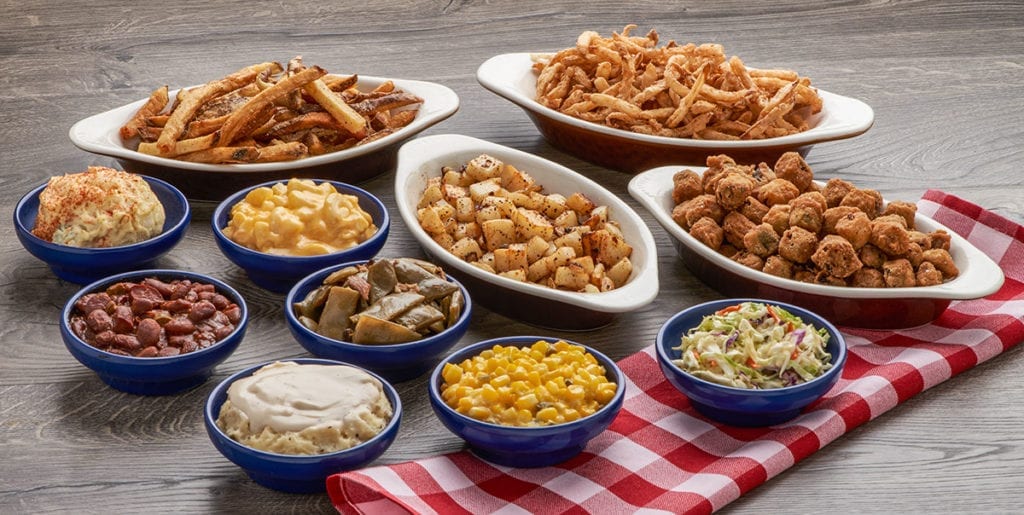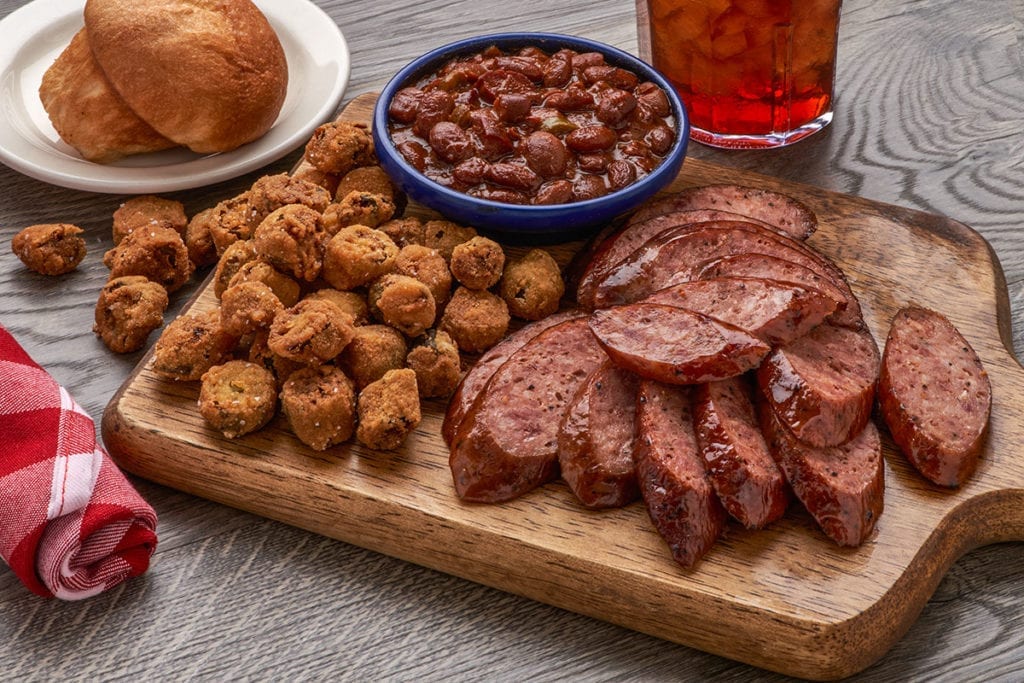Outdoor cooking isn’t alone in appealing to aficionados.
Ernest Hemingway, after all, writes in his 1926 novel The Sun Also Rises that those with passion and knowledge about any activity share common traits; he equates the matador of a bullfight with the conductor of a classic symphony.
Given the popularity of grilling, smoking and barbecuing in Oklahoma, it’s easy to find people who speak with aficion – the combination of art, science and knowledge – about outdoor cooking.
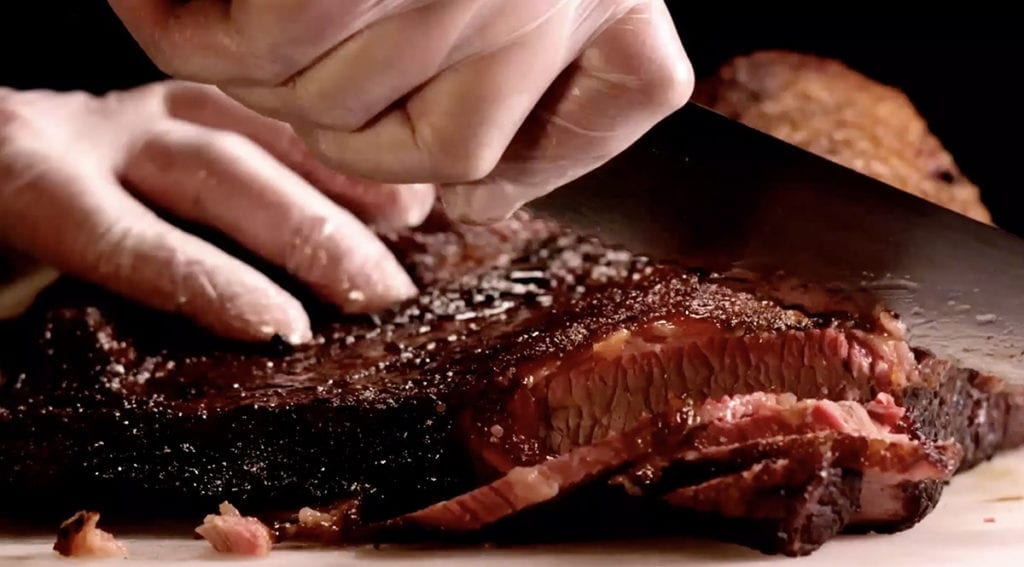
The Art
When considering the art of outdoor cooking, those who know their ways around smokers and grills become mesmerized … not because they are stumped by the concept but because they see the essence of their craft.
“Barbecue is in the eye of the beholder,” says Curt Breuklander, vice president of Oklahoma City-based Swadley’s Bar-B-Q. “Everyone is different and literally has different tastes.”
His colleague James Leighton, Swadley’s area director, adds: “It’s like a Picasso or Rembrandt painting. You know what you like and you want to make it a masterpiece.”
He chuckles.
“Plus, most artists don’t want other artists’ opinions – just like with barbecue,” Leighton says.
Tulsa lawyer Brad Beasley, who has won several prestigious barbecue contests, says the variables involved in outdoor cooking require artistic adaptation.
“No two pieces of meat are alike,” he says. “You can have two briskets, but they have come from two different head of cattle. Once you recognize that difference, you have to adjust the cooking time and heat. I’m looking for a certain temperature and tenderness and I might be checking the meat every five minutes toward the end.
“Like an artist with a fine brush, the attention is in the details and being precise with rubs, spices, injections and marinades.”
Ryan Gray, director of operations with Billy Sims Barbecue, says the outdoor cooking artist “looks at color, at feel, at tenderness. You can’t just say, ‘Do this, this and this,’ and expect everything to come out perfect.”


Swadley’s Bar-B-Q, with several locations in Oklahoma, offers a variety of smoked meats and sides 
Swadley’s Bar-B-Q, with several locations in Oklahoma, offers a variety of smoked meats and sides
The Science
Much of the science behind outdoor cooking lies in a molecular reaction named for French chemist Louis-Camille Maillard, who, in 1912, found that the breakdown of amino acids and sugars in foods (especially meats) as they heat up leads to their becoming brown.
“When you put something on the grill, you are doing two things,” says Keith Symcox, an instructor of chemistry and biochemistry at the University of Tulsa, where he teaches a class called the Chemistry of Cooking. “First, you are searing the outside of the food, which quickly evaporates the water in the food and allows the temperature to rise past the boiling point of water. Second, this high temperature allows for the proteins and sugars in the food to [undergo] a huge series of very complex reactions – so complex that after studying them for over 100 years, we still don’t have them all figured out.”
Kanika Bhargava, an associate professor of food science and human environmental science at the University of Central Oklahoma, says controlling moisture and temperature – manipulating the Maillard reaction – is an ancient practice, one begun about 2 million years ago, when human forebears began sizzling food to make it easier to eat and digest.
“Our ancestors used simple fire cooking to sustain themselves,” she says. “Any food is a mixture of organic compounds – carbohydrates, proteins, fat and water. Any type of heat exposure involves thermodynamics. The food absorbs heat. With meats, the heat is transferred and the organic compounds break down naturally. As the temperature in the meat increases, it gets brown and gains flavor because the reduction sugars combine with amino acids to give it aromatic compounds. That’s what a good chef looks for in the experience.”
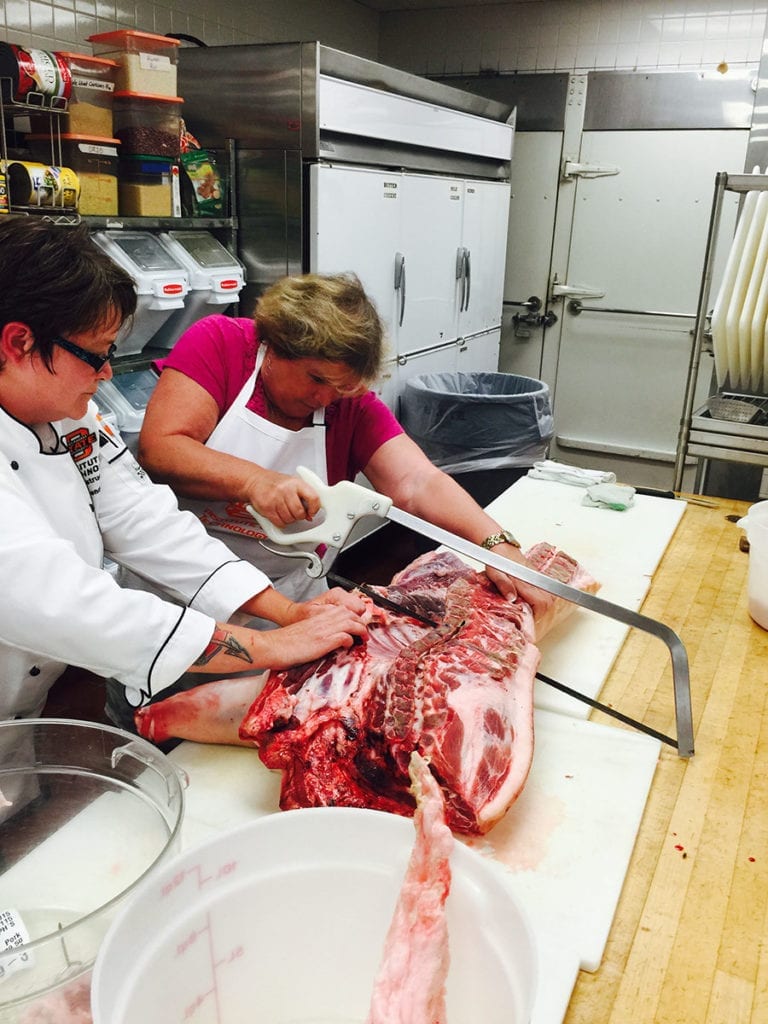
The Education
Failure is often the best teacher. Instructors of outdoor cooking embrace that educational philosophy.
Brenda Nimmo, a culinary instructor for eight years at the Oklahoma State University Institute of Technology, dares her students to take risks and learn from mistakes. Her outdoor kitchen provides the perfect classroom for this method.
“You can bring any recipe outdoors that you do indoors,” she says. “For instance, we do brazing in a Dutch oven outside. A lot of the challenge is getting students to see that it’s a whole other level of craftsmanship. It’s overcoming fears and not worrying about messing up. You learn from messing up.”
Not all of her students take to grilling, smoking and barbecuing, but she recalls a few who have embraced the variables and chosen to prepare their final exam projects on the wood-fired grill outside.
“I wanted them to plan on how to keep the coals at the right temperature,” Nimmo says. “They needed to build on their heat management knowledge and how each protein gets treated differently, and consider flavors, seasonings and rubs, and getting your caramelization.
“They rose to the challenge.”
She is often amused when some of her charges get into the process.
“It’s funny when they come early to light the charcoal and have it ready before class begins,” she says. “It’s almost always guys. I guess that falls into a gender stereotype, doesn’t it?”

OUTSIDE ALL THE TIME
Many see smoking, grilling and barbecuing as warm-weather pursuits, but those passionate about outdoor cooking say it should be a year-round activity, especially since Oklahoma has mild winters.
“When you grill, the method is healthy because you’re not cooking something in its own fat,” says Curt Breuklander, vice president of Swadley’s Bar-B-Q.
James Leighton, Swadley’s area manager, says cooking outside “is uplifting, joyous. You get a dose of vitamin D. It’s like football season all year round.”
Brad Beasley, a Tulsa lawyer who has won notable barbecuing championships around the country, says the tastes from grilling and smoking can’t be duplicated in the oven or on the stove.
“The only impact that temperature has is on socializing,” he says. “You can’t stand outside with a cold beer in the winter. OK, maybe you can. But grilling is the only way to get that flavor – outside the kitchen.”
Ryan Gray, director of operations at Billy Sims Barbecue, says people shut in from the COVID-19 pandemic can go into their backyards, learn a different method and do it all year. He suggests cold smoking as a healthy way to preserve foods.
“People can always be doing new stuff,” he says. “It’s a great hobby.”
WHAT TO DRINK
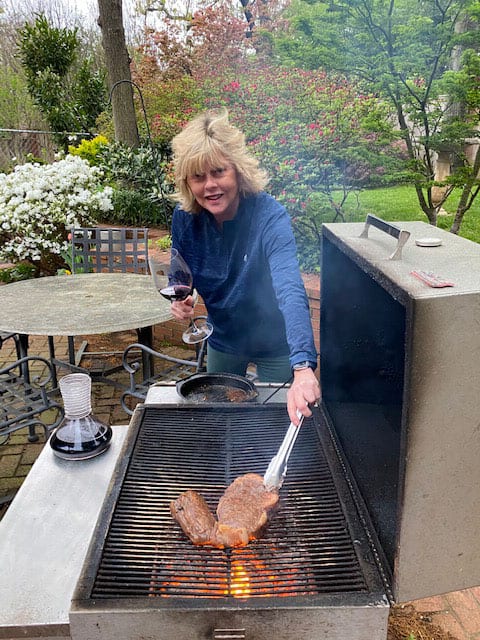
Master sommelier Randa Warren and beer expert Tim Brown of Parkhill’s Liquors, both from Tulsa, provide their respective insights on which alcoholic beverages go best with grilled, barbecued and smoked meats.
The Wines
Burgers, hot dogs and ribs – “Rose, chardonnay, viognier, merlot and a grenache/syrah/mourvedre blend let the meat be the star, and the wine washes it down.”
Chicken – “Chardonnay with oak-aging plays off the smokiness from the grill. Light red wines also work well – beaujolais, tempranillo, grenache, sangiovese.”
Salmon and tuna – “Pinot noir won’t overpower the fish. Cru beaujolais, with the right amount of acid, gives a nice balance between the food and wine.”
Steak – “Big wines love big foods. Cabernet sauvignon, red Bordeaux blends, merlot, syrah, petite sirah, amarone, super Tuscans and nebbiolo are among my favorites.”
The Beers
In general – “Ice cold lagers pair well with anything.”
Meats with a char, like brisket – “With IPAs [India pale ales], the citrus plays well with the smoky taste.”
Burgers – “Amber ales are good because they’re low on hops and maltier and more forward. They don’t have a bitter after-taste.”
Chicken – “Blonde ales are crispy and provide a nice complement to the meat.”
Sauced meats – “A porter, which is usually sweet with chocolate overtones, goes with the brown, sugary coatings.”






















